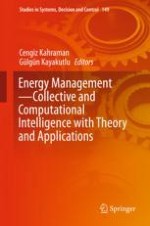2018 | OriginalPaper | Buchkapitel
11. Strategic Renewable Energy Source Selection for Turkey with Hesitant Fuzzy MCDM Method
verfasst von : Gülçin Büyüközkan, Yağmur Karabulut, Merve Güler
Erschienen in: Energy Management—Collective and Computational Intelligence with Theory and Applications
Aktivieren Sie unsere intelligente Suche, um passende Fachinhalte oder Patente zu finden.
Wählen Sie Textabschnitte aus um mit Künstlicher Intelligenz passenden Patente zu finden. powered by
Markieren Sie Textabschnitte, um KI-gestützt weitere passende Inhalte zu finden. powered by
